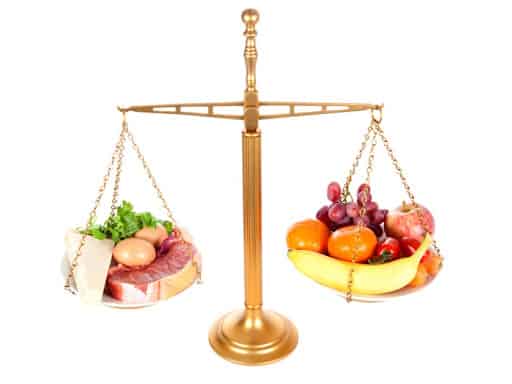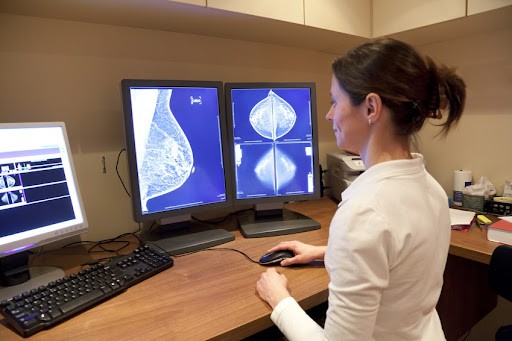
Molly Nguyen
BSc (Human Nutrition)
Breast cancer today is becoming the most prevalent type of cancer worldwide, with 99% occurring in women. Also, it is more common in women over 50 years and older, with nearly 75% of cases.
There is no way to prevent breast cancer, but we can reduce the risk factors such as use of different types of medication, hormone therapy, exposure to radiation, and balanced nutrition and activity.
With Australia and New Zealand being among the countries with the highest rates of breast cancer, we need to understand how we can reduce and mitigate the risks associated with breast cancer.
Breast Cancer Statistics
Breast cancer has been known to be the most common cancer among women worldwide. In 2020, breast cancer has surpassed lung cancer as the leading cause of new cancer cases (with 2.26 million new cases of breast cancer), and the 5th leading cause of cancer-related deaths (with 685,000 deaths from breast cancer) worldwide.[1]
Although breast cancer is more common in women, approximately 1% of breast cancer occurs in men. With a rapid increase in the number of new cases in the past 5 years, breast cancer has become the most prevalent cancer globally.
Countries with the highest rate of new breast cancer cases were Australia/New Zealand, followed by Western Europe, Northern America and Northern Europe.[2]

The higher rates of having breast cancer in developed countries may be due to certain reproductive and hormonal risk factors, lifestyle risk factors and higher rates of breast cancer detection through screening.[2]

It is important to know that breast cancer can happen to women in any country of the world at any age after puberty, and the chance of developing breast cancer increases with age. However, breast cancer treatment nowadays is very effective, especially if it is identified early.
In many countries with advanced treatment, 80-90% of people with early diagnosed breast cancer survive 5 years or more, which highlights the importance of breast screening at an early age.[3]
What increases the risk of breast cancer?
Risk factors we cannot change
A risk factor is something that increases our chances of having a disease. Unfortunately, there are some risks factors of breast cancer that we cannot change, including:
- Gender: Being a female is the biggest risk factor for having breast cancer. The risk of having breast cancer in females is 99% compared to males.[1]
- Age: As we get older, the risk for developing breast cancer also increases, especially over the age of 50. In 2020, around 89% of breast cancer cases occurred in women aged 50 and older.[1]
- Family history: Having a family history of breast cancer can significantly increase the risk. More specifically, if you have one first-degree relative (e.g., mother, sister or daughter) with breast cancer, your risk is almost 2 times higher than those without a family history. If you have more than one first-degree relative with breast cancer, the risk of having breast cancer can be 3-4 times higher.[3]
- Inheritance of mutated genes: Hereditary breast cancer is thought to contribute about 5-10% of breast cancer diagnoses. The inherited mutations, commonly in BRCA1 and BRCA2, lead to a higher risk of breast cancer.[4]

Risk factors we can change
On the other hand, there are certain lifestyle-related risk factors that we can control.
Life events
- Lifetime exposure to hormones (oestrogen and progesterone) increases breast cancer chances.[3]
- Early menarche (before the age of 12).*
- Late natural menopause (after the age of 55).*
- Not bearing a child.
- First pregnancy over the age of 30.
*Nutrition can influence the age of menarche, with high protein and high energy diets promoting early menarche and late menopause.
- Radiation:
- Exposure to radiation (e.g., X-ray), particularly during puberty, increases the risk of developing breast cancer.[4]
- Medication
- Hormone replacement therapy (HRT) (containing oestrogen only) is associated with some increase in the risk of breast cancer; a combination of oestrogen and progesterone HRT greatly increases the risk.[3,4]
- Combined oral contraceptives (containing both oestrogen and progesterone) increase risk in current and recent users only. However, the increase in risk is quite small.[3,4]
Diet, nutrition, and physical activity
Because breast cancer is mainly affected by hormones, the risk factors of premenopausal breast cancer and postmenopausal breast cancer (more common) are not similar.
The differences in risk associated with diet, nutrition, physical activity and breast cancer are as outlined below.[3]
| Premenopausal breast cancer | Postmenopausal breast cancer |
| Alcohol consumption increases the risk of premenopausal and postmenopausal breast cancer | |
Adult attained height (being tall) increases the risk of premenopausal and postmenopausal breast cancer (Early-life nutritional factors that affect height, body composition, age of sexual maturity leading to hormonal and metabolic changes could influence the risk of breast cancer) | |
| Greater birth weight increases the risk of premenopausal breast cancer | High levels of body fat (measured by BMI, waist circumference, and waist-to-hip ratio) increases the risk of postmenopausal breast cancer |
| Greater weight gain in adulthood increases the risk of breast cancer | |
TO SUMMARIZE:

Read more on Diet, nutrition, physical activity and breast cancer.
Top 10 tips for reducing the risk of breast cancer
1. Be physically active
Vigorous physical activity is linked to decreasing the risk of premenopausal breast cancer. Total (moderate to vigorous) physical activity is linked to a decreased risk of postmenopausal breast cancer.[3,5]
RELATED — Training and menopause: How can exercise positively affect your transition?
Increased physical activity can decrease our total body fat, thus changing our hormonal and metabolic system (such as improving insulin sensitivity) which can reduce cancer risk. Physical activity also links to a decreased levels of oestrogen in postmenopausal women, thereby decreasing lifetime exposure to oestrogen (a risk factor for breast cancer).[3]
The World Health Organization recommendations on physical activity for adults are at least 150 minutes of moderate physical activity (e.g., brisk walking) or at least 75 minutes of vigorous physical activity (e.g., running, sports, gym workout, other aerobic activities) throughout the week or an equivalent combination of these.[6]
Please see our page on Activities and Performance for different types of exercises.
2. Limit alcohol consumption
It is recommended not to drink alcohol, and if we choose to drink, we should drink in moderation (≤ 1 drink a day in women and ≤ 2 drinks a day in men).[7] However, there is no safe level for alcohol consumption. Alcohol consumption is strongly associated with increased risks of premenopausal and postmenopausal breast cancers.[3]
RELATED — Alcohol and Performance: Physical and Physiological effects
Even a small amount of alcohol is associated with a higher risk of cancer, and the risk increases with the amount/frequency of drinking.[7]
3. Maintain a healthy weight
Being overweight or obese, especially after menopause, is linked to an increased risk of breast cancer. High levels of body fat can affect the levels of many hormones, growth factors and inflammatory responses, which can all promote cancer development.[3]
Even though being overweight does not increase the risk of premenopausal breast cancer, it will more likely be leading to being overweight post menopause (a risk factor of breast cancer).
Therefore, it is recommended to stay at a healthy weight throughout our life by having a healthy and balanced diet as well as being physically active.
RELATED — What is HAES: Does it promote obesity and is it healthy?
4. Eat a diet rich in whole grains, beans, fruits and vegetables
It is believed that the bioactive and carotenoid components in fruits and vegetables might be protective against certain types of breast cancers. Eating plenty of whole grains, beans, fruits and vegetables can help to maintain a healthy weight, which might influence the risk of breast cancer.[3]

5. Limit the consumption of processed foods
Processed foods that are high in trans-fat, saturated fat and sugar are usually high in energy. Limiting these foods helps to control the calorie intake and keeps a healthy weight, which is associated with breast cancer risk reduction.
There is limited evidence suggesting the increase of breast cancer risk is associated with red and processed meat consumption. The heme iron content or mutagens (substance or agent that cause mutation) created during the cooking of red or processed meat can promote breast cancer development.[7]
It is recommended to eat less than 500 g of red meat per week or eat little (if any) processed meat.[3]
6. Childbearing and breastfeeding
Not having a child or having a child after the age of 30 can increase the risk of breast cancer due to longer exposure to oestrogen and progesterone hormones during the menstrual cycle.
In contrast, bearing a child and pregnancy before the age of 30 reduces the risk of breast cancer.[3] If possible, breastfeed your baby for at least several months.
Breastfeeding can reduce the risk of breast cancer by decreasing your lifetime exposure to the menstrual cycle and circulating hormones. The process of lactation can eliminate cells with possible mutation, thus reducing the risk of having cancer cells.[3]
7. Avoid hormone therapy or combined oral contraceptive
Combined hormonal replacement therapy can increase the risk of breast cancer.[3,4] If you are considering using HRT to treat menopause symptoms, talk to your doctor about the possible risks, benefits and alternatives.
RELATED — Menopause Revealed: Signs, Stages, Types and Treatment
The use of combined oral contraceptives has a small increase in risk in current and recent users only.[3,4] If possible, seek other alternative contraceptive methods.
8. Avoid excessive radiation exposure
At a young age, particularly during puberty, breast tissues go through rapid cell division and growth.[3] Exposure to radiation (e.g., radiotherapy, X-rays) at a younger age increases the risk of breast cancer.[4]
Be informed and talk to your doctor about any concerns, risk, benefit and alternative procedures.
9. Genetic counselling and testing for breast cancer risk
If you are at high risk of breast cancer because of your family history or a family member with known mutated genes (commonly BRCA1 and BRCA2), there are chances that you may have inherited the mutated genes as well.[8]

10. Breast cancer screening or breast exams
The risk of breast cancer increases as we get older, particularly over the age of 50.[1] Therefore, it is recommended for women to have regular breast screening (mammography) every year or every 2 years, depending on the risk and age.
Since the 5-year survival rate for early stages of breast cancer is 80-90%, it is important to have regular breast screening for early detection of potential breast cancer.[3]
Conclusion
Even though breast cancer is the most common type of cancer globally, advanced treatment and regular screening have improved the survival rate of breast cancer in women with early diagnosis.
We have highlighted some of the most common risk factors of breast cancer (both modifiable and non-modifiable) as well as provided recommendations on how to lower risks of breast cancer.
With a special interest in food and nutrition, Molly’s passion is to become a dietitian with expertise in nutrition and chronic diseases. Molly’s aim is to advocate the role that diets play in the prevention, treatment and reversal of non-communicable diseases that many are facing nowadays. By using the scientific evidence behind healthy eating, Molly’s focus is to help people follow a healthful and balanced diet to achieve their desired health outcomes.
References
(1) World Health Organization. (2021, March 26). Breast Cancer. https://www.who.int/news-room/fact-sheets/detail/breast-cancer
(2) Sung, H., Ferlay, J., Siegel, R. L., Laversanne, M., Soerjomataram, I., Jemal, A., & Bray, F. (2021). Global cancer statistics 2020: GLOBOCAN estimates of incidence and mortality worldwide for 36 cancers in 185 countries. CA: A Cancer Journal for Clinicians, 71(3), 209-249.
(3) World Cancer Research Fund, & American Institute for Cancer Research. (2017, 2018). Diet, nutrition, physical activity and breast cancer. World Cancer Research Fund International. https://www.wcrf.org/dietandcancer
(4) Rojas, K., & Stuckey, A. (2016). Breast cancer epidemiology and risk factors. Clinical Obstetrics and Gynecology, 59(4), 651-672.
(5) Hardefeldt, P. J., Penninkilampi, R., Edirimanne, S., & Eslick, G. D. (2018). Physical activity and weight loss reduce the risk of breast cancer: a meta-analysis of 139 prospective and retrospective studies. Clinical Breast Cancer, 18(4), e601-e612.
(6) World Health Organization. (2020, November 26). Physical activity. https://www.who.int/news-room/fact-sheets/detail/physical-activity
(7) De Cicco, P., Catani, M. V., Gasperi, V., Sibilano, M., Quaglietta, M., & Savini, I. (2019). Nutrition and Breast Cancer: A Literature Review on Prevention, Treatment and Recurrence. Nutrients, 11(7). https://doi.org/10.3390/nu11071514
(8) American Cancer Society. (2020, June 9). Lifestyle-related Breast Cancer Risk Factors. https://www.cancer.org/cancer/breast-cancer/risk-and-prevention/lifestyle-related-breast-cancer-risk-factors.html






